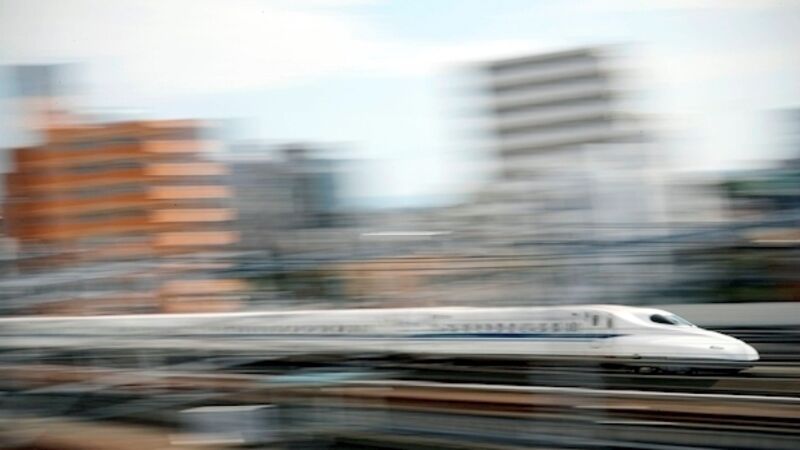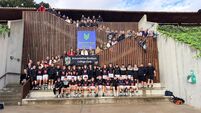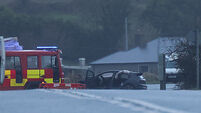Hamamatsu feels like a sleepy halfway house between competing cultures

No doubt about it, this World Cup has come down through the gears this last five days after what was a breakneck opening to the tournament.
A front-loaded fixture schedule almost demanded this sort of lull but it took Fiji’s shock defeat to Uruguay to keep the engine ticking over until Japan face Ireland today and Tokyo hosts Wales and Australia tomorrow.
Joe Schmidt and the lads caught this mood perfectly by bivouacking in the rural retreat that is the Katsuragi Hotel Kitanomaru in Iwata where the 60-strong contingent has been walking around in bare feet and sleeping on rice pillows. Lush. Hamamatsu, where most of the Irish media corp have landed, feels sleepy in its own way. Then again, where wouldn’t after the thrill that is Tokyo and its surrounds?
Getting here was a blast.
The Bullet Train, or Shinkansen to give it its proper title, is everything you have heard it to be. Clean and ridiculously fast, just standing on a platform as an express shoots past is an experience in itself and there was a sense of incredulity when Monday’s 12.37 from Yokohama actually arrived late because of a gathering storm front further west.
“You don’t know how rare this is, you’re lucky,” said our English guide. He has clearly never been marooned at Limerick Junction on a wet and cold December evening, but boy does the thing move. A journey of 114km takes under half-an-hour on the quickest train. That’s more or less the distance from Cork to Thurles but that will eat well over an hour out of your day.
Hamamatsu itself feels like something of a halfway house and that’s fitting given its location near a sort of midway point on the main island of Honshu. The Kansai region (Osaka and Kyoto) lies to the west and Kanto (with Tokyo at it’s heart) sits to the east and these are two titans that don’t exactly like each other.
Think Cork and Dublin. Or Manchester and London.
Kansai and Kanto have distinct accents, culture, food, senses of humour and more. They even stand on opposite sides of escalators. Kansai people are said to be warmer than their Kanto brethren, while harbouring a residual bitterness for the manner in which their prominence was superseded by Tokyo which, for so many years, had been just a simple fishing village.
But back to Hamamatsu.
The city has a population of 800,000 so it’s not exactly a one-horse town and that has been a relief. Conversations with guides and travel agents had given rise to the suspicion that the place would be out in the boonies but it’s been fine, if nothing to write home about. Literally. It doesn’t merit one mention in Lonely Planet and there hasn’t been a single sighting of a postcard.
Scan the place on Google Maps and the first thing that hits you is the almost total lack of greenery, although the pathway down by the Magome River has been a welcome find for those of us eager to exercise and avoid the exorbitant €40 per day costs for using hotel gyms over here. And for those trying to work off the inevitable excesses of life on extended tour.
Restaurants and bars abound. As do karaoke joints which, word has it, will hand you a microphone and ply you with free beer through to the dawn for a very reasonable cover charge. It’s actually astonishing how cities here transform at night. Drab and sleepy by day, the centre turns on that neon charm after the sun goes down like some oriental La Vegas.
What Hamamatsu and nearby Fukuroi, where Ireland play today, have offered is a glimpse into a more typical Japanese existence. The simple act of strolling through local neighbourhoods opens the door into the realities of life here, from the impossibly narrow cars shoehorned into tiny driveways to the ridiculously young kids walking unaccompanied to school.
And it has been a window into the changing DNA of a nation. Japan is slowly but surely opening itself up to foreigners in a manner that would have been unthinkable back in the 1980s when walking around without your passport was grounds to land you in a police station for a few hours facing stern questions from the local bobbies.
Hamamatsu was way ahead of that curve by inviting foreigners to work in the local industries over 30 years ago. The city is home to almost 10,000 Brazilians who have their own consulate and street signs in Portuguese.
But not all of them came to work. At least one of their compatriots opted for a new life as a monk in the Kasuisai Temple. One of the largest temples in the Tokai district, and belonging to the Toko sect, it was established in 1394.
Its peace and simplicity offered the greatest contrast yet to the sugar rush that was the Tokyo Metropolitan area as monks explained how it is that Buddhism and Shinto can co-exist in the minds and hearts of the Japanese people.
Next stop for Ireland and its media train is Kobe with its world-famous beef and a scenic harbour framed by surrounding mountains.
This country has only begun to reveal itself.
Email: brendan.obrien@examiner.ie
Twitter: @byBrendanOBrien


















